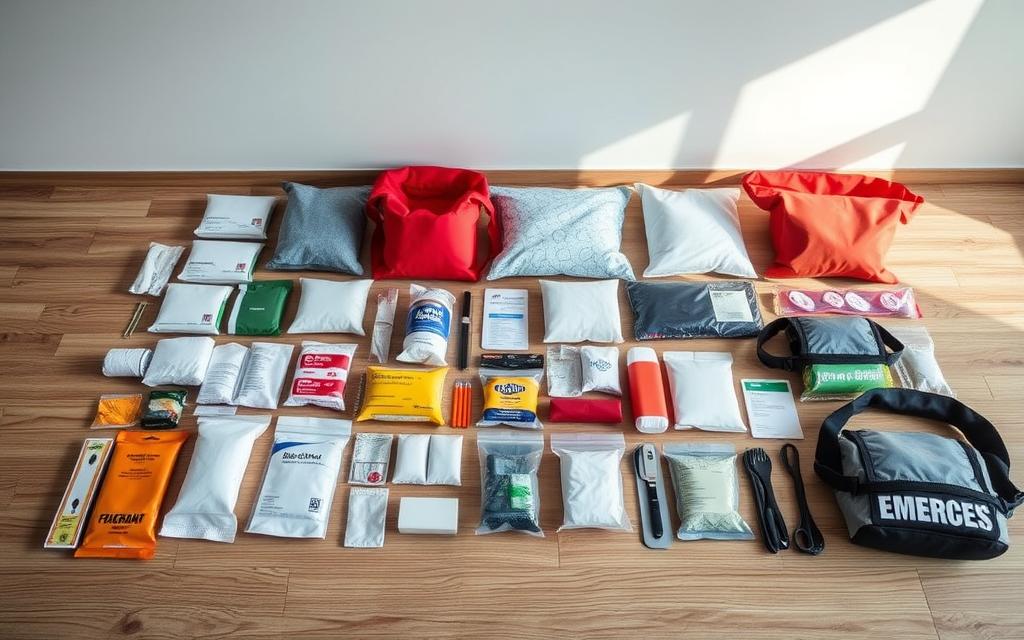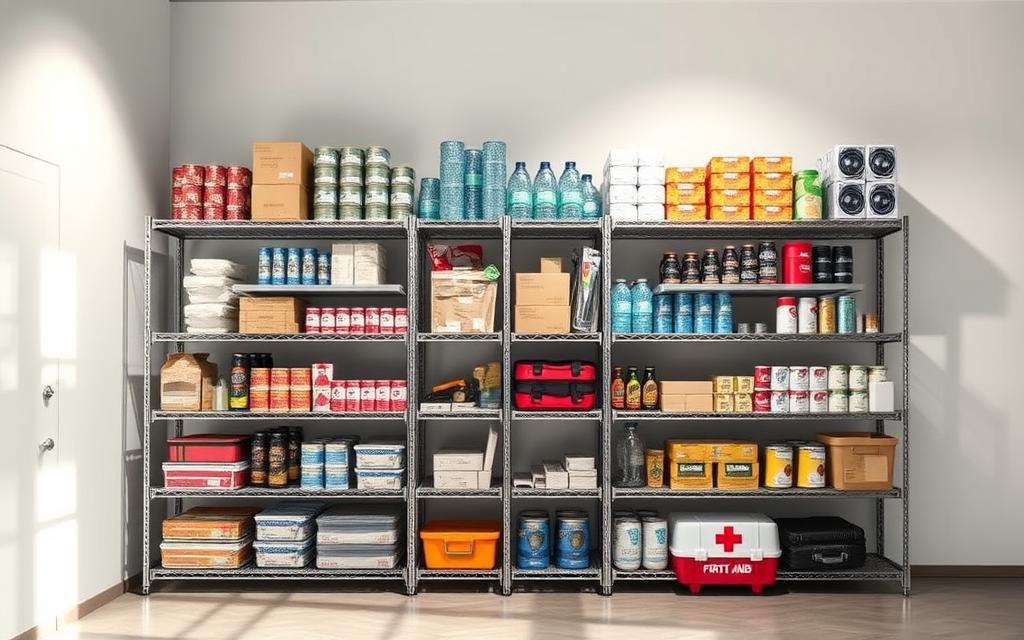Life can change in an instant. Whether it’s a power outage, severe weather, or unexpected events, having the right tools on hand ensures you’re ready to handle whatever comes your way. A thoughtfully assembled collection of supplies isn’t just practical—it’s peace of mind for you and your loved ones.
Think of your supplies as a personalized safety net. Basics like water, non-perishable food, and first-aid items form the foundation. But don’t stop there. Consider adding flashlights, batteries, and a hand-crank radio to stay informed if cell service falters. The trusted checklist from Ready.gov offers a great starting point.
Your needs matter. Families with infants might include formula, while pet owners should stock extra food for furry companions. Store duplicates in your car and workplace—disasters don’t wait for convenience. Rotate items every six months to keep everything fresh and functional.
This guide will walk you through building a system that fits your life. We’ll cover must-have items, storage tips, and how to tailor your approach for different scenarios. Let’s turn uncertainty into confidence, one smart step at a time.
Why Emergency Preparedness Matters
Storms don’t warn us—they remind us why foresight matters. By understanding local risks like floods, wildfires, or extreme weather, you create a shield against chaos. Start by asking: What threats does your area face? A coastal home needs flood plans, while tornado-prone regions require storm-safe spaces. This tailored approach builds resilience for your family and neighbors.

Risks Shape Readiness
Every disaster disrupts routines. Power fails. Stores close. Roads become impassable. That’s when a stocked first aid kit and bottled water turn panic into action. For children or elderly relatives, include medications and comfort items. Keep critical documents—IDs, insurance papers—in waterproof sleeves. Quick access saves time when seconds count.
When Life Gets Upended
Severe weather events often leave communities isolated. A NOAA weather radio provides real-time alerts, helping you make smart choices. After hurricanes, many people spend days without electricity. Those who planned ahead shared resources, checked on neighbors, and stayed calmer. As research shows, why planning ahead matters extends beyond your home—it strengthens entire neighborhoods.
Next, we’ll explore exactly what to pack so your supplies match these realities. Because when skies clear, preparedness leaves everyone standing stronger.
Building Your Emergency Preparedness Kit: Essential Items
Your safety net starts with smart choices. Let’s break down the must-haves that keep households resilient when plans change. Customization is key—adapt these basics to fit your family’s daily routines and unique requirements.

Water, Food, and Basic Supplies
Start with water: one gallon per person daily for at least three days. Store it in sturdy plastic containers. For food, choose ready-to-eat items like granola bars, canned veggies, or dried fruit. Don’t forget a manual can opener!
- High-protein snacks (peanut butter, nuts)
- Reusable utensils and paper plates
- Pet food stored in airtight bags
Tools, First Aid, and Critical Equipment
A radio with extra batteries keeps you informed during outages. Pack LED flashlights and a first aid kit with bandages, pain relievers, and prescription meds. Throw in work gloves and multi-tools—they’re lifesavers for quick fixes.
Special Considerations for Family and Pets
Babies need formula and diapers, while seniors might require extra medications. Keep a contact list with doctors’ numbers and out-of-town relatives. For pets, include collapsible bowls and a favorite toy to ease stress.
Store everything in easy-grab bins. Label them clearly, and practice grabbing your supplies during drills. Little details today create big peace of mind tomorrow.
Maintaining and Storing Your Kit: Tips for Readiness
Your supplies only work if they’re ready when you are. A little upkeep goes a long way in keeping your essentials fresh, functional, and within reach. Let’s explore how to stay organized so you can act fast when life throws curveballs.

Regular Maintenance and Expiration Management
Make sure to check dates every six months. Swap expired snacks or canned goods first. Rotate medication and diapers if you have little ones. Pets? Their food needs refreshing too!
Label items with expiration dates using duct tape and markers. This simple trick helps spot outdated supplies fast. Keep a checklist in your house binder or phone reminders to stay on track.
Smart Storage Solutions at Home, Work, and in Your Car
Store items in airtight bags inside plastic bins at home—cool, dry spots like closets work best. For work, pack a slim case under your desk with a flashlight, water, and protein bars.
Your car needs its own kit. Include jumper cables and blankets in a weatherproof container. If you may need to leave quickly, keep this stocked year-round.
Organize supplies by category: first aid in red bags, tools in labeled pouches. Use duct tape to secure loose items. With smart systems, you’ll handle emergencies calmly—wherever they happen.
Conclusion
Being ready isn’t about fear—it’s about empowerment. Throughout this guide, we’ve explored how understanding risks, gathering smart supplies, and organizing storage in your home or car creates confidence. A designated place for essentials ensures quick access when every second counts.
Remember: small steps make big differences. Storing a gallon of water per person daily, checking medications regularly, and adding basic fire safety tools like extinguishers can turn chaos into calm. Review your plan as family needs change—new allergies, growing kids, or updated prescriptions all matter.
For a detailed checklist and tips, explore our comprehensive guide. It’s packed with actionable advice to refine your strategy.
Start today. Tweak your supplies, test your systems, and share what you learn. When life surprises you, you’ll be glad you took charge. Here’s to building resilience—one thoughtful choice at a time.
